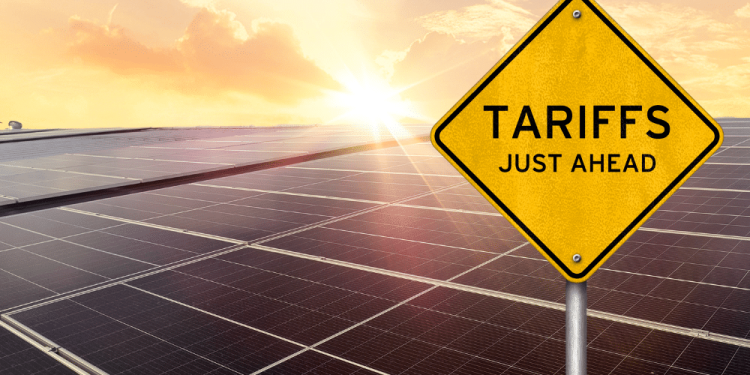The renewable energy sector is no stranger to turbulence, but recent US-imposed tariffs have added an unexpected twist to the plot. While these tariffs primarily target imports into the United States, their ripple effects are being felt as far afield as Australia’s burgeoning solar and renewables industry.
The tariff tangle: A brief overview
In early April 2025, the US government announced a 10% baseline tariff on imports, including those from Australia, effective 5 April 2025. Most goods originating in Australia are now subject to this tariff upon entry into the US. Additionally, other trading partners face new reciprocal tariff rates, further complicating international trade dynamics.
Direct impacts on Australian exports
The immediate consequence of these tariffs is a projected $27 billion hit to Australia’s economy, potentially reducing GDP by up to 1%. For the renewables sector, particularly solar, this translates to increased costs for imported components and potential delays in project timelines. The Minerals Council of Australia has voiced concerns, stating that these tariffs will not only hurt Australian exporters but also drive up costs for US consumers.
A silver lining amidst the clouds?
Interestingly, some analysts suggest that the US tariffs might inadvertently benefit Australia’s green energy transition. With capital potentially being redirected from the US due to these trade barriers, Australia could position itself as an attractive alternative for investors seeking stable and lucrative opportunities in the renewable sector.
Current state of play in Australia’s solar industry
Despite these international challenges, Australia’s solar industry has been on an upward trajectory. As of early 2025, the sector has seen significant growth, with solar energy accounting for 39.4% of total energy generation. Investments in large-scale wind and solar farms reached a six-year high in 2024, with $9 billion committed to new projects.
The road ahead: A 12-month outlook
Looking forward, the Australian solar and renewables industry faces a mixed bag of opportunities and challenges:
- Investment influx: The redirection of global capital due to US tariffs could lead to increased investments in Australian renewable projects.
- Policy shifts: The Queensland government’s recent decision to repeal renewable energy targets and extend coal-fired power operations introduces uncertainty. While this move aims to stabilise energy reliability and reduce costs, it may impact the pace of renewable energy adoption.
- Technological advancements: The industry is poised for innovations, including more efficient solar panels and expanded battery storage solutions, enhancing the viability of solar energy.
- Grid integration challenges: As solar installations increase, integrating this energy into the existing grid remains a hurdle. Addressing this will be crucial to maximise the benefits of solar energy.
- Federal election outcome: With an election looming, energy policy hangs in the balance. Labor promises battery rebates and heavy renewables investment. The Coalition backs gas expansion and nuclear power. Either way Australia votes, the winning party is set to transform the energy market substantially.
Strategies for resilience and growth
To navigate these turbulent times, stakeholders in Australia’s renewable sector might consider:
- Diversifying supply chains: Reducing reliance on imported components can mitigate tariff impacts and bolster domestic manufacturing.
- Engaging with policymakers: Active dialogue can ensure that policy decisions support the growth and integration of renewable energy sources.
- Fostering innovation: Investing in research and development can lead to technological breakthroughs, enhancing efficiency and reducing costs.
- Building investor confidence: Transparent communication about project viability and returns can attract and retain investment in the sector.
While the US-imposed tariffs present challenges, they also offer an impetus for Australia’s solar and renewables industry to innovate and adapt. By embracing change and focusing on sustainable growth strategies, Australia can continue its journey towards a greener and more resilient energy future.
Take hold of your own energy future. Save with solar and battery storage. Energy Matters connects home and business owners with reputable installers who will provide you with FREE and no-obligation quotes. Request your quotes NOW.


















